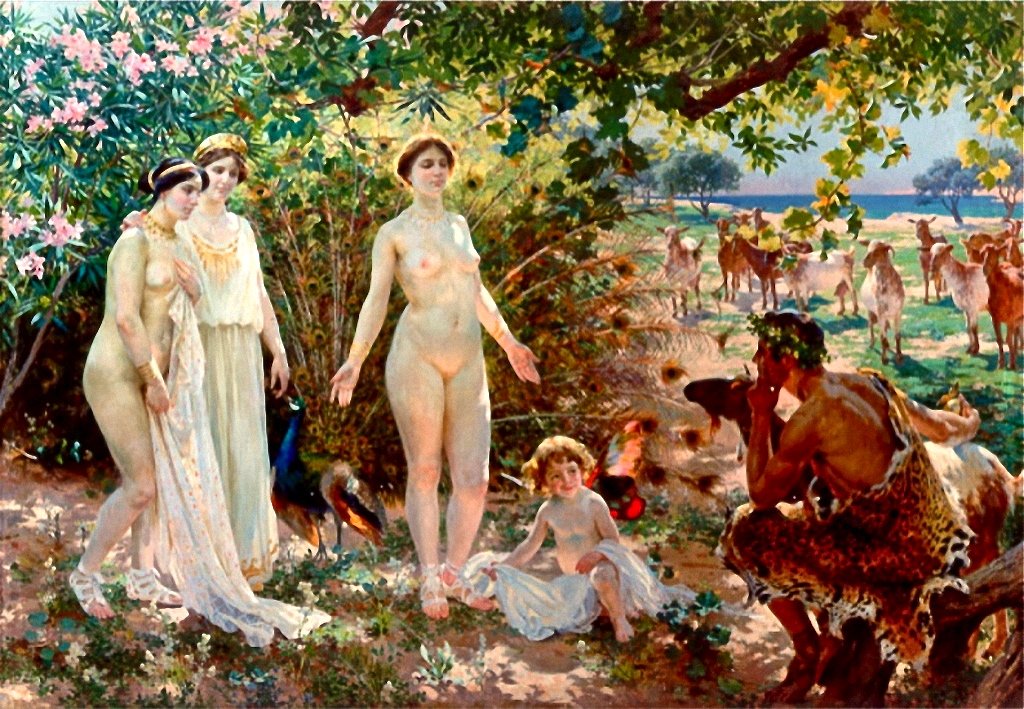The Flowering Quince
The story of the fruiting quince, why the Garden of Eden may have had no apples, and how Disney stole from Greece.
Chaenomeles speciosa, April 6th
The Chaenomeles speciosa, commonly called flowering Japanese quince, is a dense, spiny deciduous shrub with often-tangled, usually gray-brown twigs. It produces some of the most lovely flamingo pink blooms in very early spring and some of the most densely bitter, nearly inedible fruit. Early on, botanists confused these fruits with something desirable and the plant went through numerous iterations of genus before someone, at last, distinguished the shrub as its own. The jumble began in 1784 when Carl P. Thunberg thought it a new kind of pear (or Pyrus) and labelled it Pyrus japonica as an homage to its Eastern origins. This is not as far off as it may at first seem. It is, correctly, in the same Malinae subtribe of the Rosaceae family as the pear and apple. Then in 1807, Christiaan H. Persoon noticed that the shrub produced a fruit with an abundance of seeds rather than the relatively sparse 5-10, as do the pear and apple, and therefore did not belong to the same genus. Flowering quince was known to have similarities to the fruiting quince (Cydonia oblonga) and quickly transitioned to Cydonia japonica. As Linnaean distinction became more precise, in 1822 John Lindley took note that flowering quince had stamens in two rows, while Cydonia produced stamens in one row and, most obviously of all, had a different fruit anatomy entirely. At some point this must have involved an utterly dispiriting chomp. And thus, he settled on the still not quite correct Chaenomeles, from the Greek word chaino (meaning to gape) and melon (meaning apple) in the mistaken belief that the fruits split open. They do not.
Cydonia oblonga Mill., syn. Pyrus cydonia L., Johann Georg Sturm, 1796
Incidentally, while the Cydonian quince may seem somewhat uncommon today, that wasn’t always the case. It is native to and thrived in the arid sunny climates of the Hyrcanian south of the Caspian Sea, and eventually spread locally to Iran, Turkey and Greece. The name borrows from Kydonia (or Cydonia), an ancient city-state on the northwest coast of the island of Crete. In legend, Cydonia was founded by King Cydon, a son of Hermes (or possibly Apollo) and of Akakallis, the daughter of King Minos. Quince flourished in the heat of this Mesopotamian plain and its fruits were called 'golden apples' by the story tellers of that time. Our common conception of apples (McIntosh, anyone?) did not. The golden apple is a recurring element in a great number of regional and ethnic folk legends and fairy tales, especially of that region. It turns out that much of the classical tradition referencing apples was more probably alluding to the quince.
Consider this bit of Greek lore: Eris (the goddess of discord and strife) was the only goddess not to be invited to the wedding of Peleus and Thetis. She turned up anyway and was refused admittance. Enraged, she threw a golden apple amongst the goddesses inscribed with the words "To the fairest." In a moment of tide turning vanity, three attending goddesses laid claim to it--Hera, Aphrodite and Athena--and in their rivalry brought about the events leading up to the Trojan War. If this story invokes images of spinning wheels and fairy god-mothers, take peace in knowing that Disney’s Snow White (and Sleeping Beauty) borrows heavily (if not flagrantly plagiarizes) this theme. What might prompt pause was the arresting notion that the pivotal toxic fruit was, in all likelihood, originally a quince.
Cydippe with the Apple of Acontius by Paulus Bor, 1620. Probably a quince.
Even more head turningly distant from our modern interpretations of canon is the confusion over the apple of Eden. Many scholars today believe the forbidden fruit, a story also incept from middle eastern roots, was a reference to the Cydonia quince rather than Malus domestica. The Mideast origin, its fuzzy, daffodil-yellow skin and a lemony perfume as penetrating as musk make it a strong candidate for the fruit that tempted Adam. That being said, the part of a man’s throat thought to represent the fruity bite he choked on, would sound a bit emasculating today if known as the Adam’s Quince.
The Japanese flowering quince has no direct connection to the fertile crescent but rather is native to China, Tibet and Myanmar. It is almost always planted as an ornamental shrub rather than a provider of sustenance. The fruits, while bitter and hard, are suitable for making liqueurs, marmalade and preserves, as they contain more pectin than apples and true quinces. The shrub has also been cultivated as a bonsai. It is remarkably low maintenance, even tolerating our dense Indiana clay. It prefers full sun or just a little shade and sprinkles in a dash of pale salmon to a palette of early spring brown, yellow, and purple.
The Judgement of Paris, Enrique Simonet, 1904, depicting Athena, Hera and Aphrodite
Knowledge Sources
https://www.missouribotanicalgarden.org/PlantFinder/PlantFinderDetails.aspx?taxonid=286547
https://ipm.missouri.edu/MEG/2018/9/quince/
https://en.wikipedia.org/wiki/Chaenomeles
https://www.gardenia.net/plant-variety/chaenomeles-flowering-quinces
Weber, Claude. “Cultivars in the Genus Chaenomeles,” Arnoldia 23.3 (1963): 17-75
https://en.wikipedia.org/wiki/Quince
https://en.wikipedia.org/wiki/Apple_of_Discord
https://greektraveltellers.com/blog/the-apple-of-discord-and-the-fairest-of-them-all
https://www.wythamwoods.ox.ac.uk/article/quince-cydonia-oblonga-0
https://www.meer.com/en/63211-it-wasnt-an-apple
https://en.wikipedia.org/wiki/Kydonia
Lyle, Katie Letcher (2010) [first published 2004]. The Complete Guide to Edible Wild Plants, Mushrooms, Fruits, and Nuts: How to Find, Identify, and Cook Them (2nd ed.). Guilford, Conn.: FalconGuides. p. 110
https://en.wikipedia.org/wiki/Golden_apple
Image Sources
https://commons.wikimedia.org/wiki/File:Paulus_Bor_001.jpg
https://commons.wikimedia.org/wiki/File:Enrique_Simonet_-_El_Juicio_de_Paris_-_1904.jpg
https://commons.wikimedia.org/wiki/File:Cydonia_oblonga_Sturm08005.jpg





